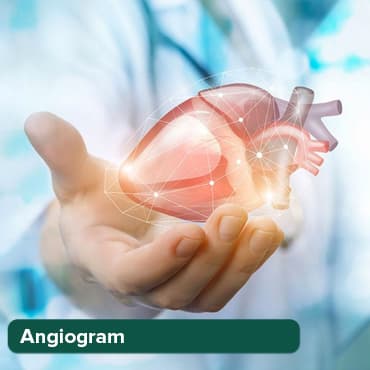
How to Manage Pain and Discomfort Post-Chemical Peel
16 Nov, 2023
 Healthtrip Team
Healthtrip TeamChemical peels, the secret behind many radiant and rejuvenated complexions, are cosmetic procedures designed to enhance skin quality by removing damaged outer layers. While these peels can work wonders for your skin's appearance, they often come with a side effect: post-procedure discomfort. In this comprehensive guide, we will walk you through the steps to effectively manage pain and discomfort after a chemical peel.
Understanding the nuances of different types of chemical peels and preparing your skin adequately before the procedure can make a significant difference in your post-peel experience. Whether you're a seasoned peel enthusiast or considering one for the first time, this blog will equip you with the knowledge and strategies to ensure a smoother, more comfortable recovery process. So, let's explore how to minimize discomfort and maximize the benefits of your chemical peel journey.
Transform Your Beauty, Boost Your Confidence
Find the right cosmetic procedure for your needs.

We specialize in a wide range of cosmetic procedures

Understanding Chemical Peels
Chemical peels are cosmetic procedures that improve skin appearance by removing damaged layers. There are three types:
1. Superficial Peel: Targets the outer layer (epidermis), causing minimal discomfort and no downtime. Effective for mild issues.
2. Medium Peel: Penetrates the middle layer (dermis), resulting in more discomfort and noticeable peeling. Ideal for moderate problems.
3. Deep Peel: Reaches deep layers, causing significant discomfort and extended recovery. Used for severe issues.
Most popular procedures in India
Atrial septal defect
Upto 80% off
90% Rated
Satisfactory

Coronary Angiogram a
Upto 80% off
90% Rated
Satisfactory

Coronary Angiogram C
Upto 80% off
90% Rated
Satisfactory

Liver Transplant
Upto 80% off
90% Rated
Satisfactory

Total Hip Replacemen
Upto 80% off
90% Rated
Satisfactory

Preparing for a Chemical Peel
1. Consultation: See a qualified dermatologist to assess your skin type and recommend the right peel.
2. Medical History: Provide your history, including allergies and medications.
3. Skin Assessment: Let the professional evaluate your skin for any existing conditions.
4. Skincare Recommendations: Follow pre-treatment skincare advice, adjust medications if needed, and protect your skin from the sun before the peel.
Proper preparation ensures better results and minimizes discomfort during and after the chemical peel.
Managing Pain and Discomfort Post-Peel
1. Pain Medications:
Pain management is crucial during the post-chemical peel phase, especially if you've undergone a medium or deep peel. Here's a more detailed breakdown:
- Prescription Pain Medications: Your dermatologist may prescribe pain medications to help you manage discomfort. These medications can vary in strength and may include opioids or non-opioid options.
- Over-the-Counter Pain Relievers: In addition to prescription medications, your dermatologist may recommend over-the-counter pain relievers like ibuprofen (Advil) or acetaminophen (Tylenol). Always follow your doctor's instructions and dosage recommendations.
2. Cold Compress:
Using a cold compress or ice pack can provide relief from pain and swelling. Here's how to do it in more detail:
- Method: Wrap ice or a cold pack in a thin cloth to avoid direct contact with your skin. Apply it to the treated area for 15-20 minutes at a time.
- Frequency: You can repeat this every 1-2 hours during the first day or two after the peel. Be gentle and avoid excessive pressure.
3. Hydration:
Proper hydration is essential for skin healing and comfort. Here are more specific guidelines:
- Moisturizer Selection: Choose a moisturizer specifically designed for sensitive or post-peel skin. Look for products labeled "gentle" or "non-irritating." Avoid moisturizers with alcohol, fragrances, or harsh chemicals.
- Application: Apply the moisturizer generously to the treated area, gently massaging it into your skin. Do this multiple times a day to maintain skin hydration.
4. Sun Protection:
Protecting your skin from the sun is critical after a chemical peel, as your skin becomes more vulnerable to UV damage. Here's a detailed approach:
- Broad-Spectrum Sunscreen: Use a broad-spectrum sunscreen with SPF 30 or higher. Ensure it provides protection against both UVA and UVB rays.
- Frequent Reapplication: Reapply sunscreen every two hours, especially if you're spending time outdoors. Use a generous amount to cover the treated area.
- Avoid Direct Sunlight: Stay out of direct sunlight as much as possible for several days post-peel. If you must go outside, wear protective clothing like wide-brimmed hats and sunglasses.
5. Avoid Scratching or Picking:
Resist the urge to scratch or pick at peeling skin, as it can lead to complications. Here's more information:
- Natural Shedding: The peeling of the skin is a natural part of the healing process. Allow the skin to shed on its own without interference.
- Gentle Cleansing: Instead of scratching, cleanse the treated area gently with a mild, non-abrasive cleanser and lukewarm water.
6. Avoid Harsh Skincare Products:
Post-chemical peel, your skin is sensitive and needs gentle care. Here are additional details:
- Harsh Ingredients: Avoid skincare products containing harsh ingredients like retinoids, alpha hydroxy acids (AHAs), and strong exfoliants. These can further irritate your skin.
- Wait for Approval: Wait for your dermatologist's approval before reintroducing any products with active ingredients into your skincare routine.
7. Follow Post-Peel Instructions:
Your dermatologist will provide specific post-peel instructions tailored to your treatment. These instructions may include:
- Cleansing Routine: Detailed guidelines on how to cleanse your skin without causing irritation.
- Product Recommendations: Recommendations for skincare products to use during the recovery period.
- Follow-Up Appointments: Scheduled follow-up appointments to monitor your progress and adjust your treatment plan if necessary.
8. Stay Hydrated:
Hydration is essential for your overall well-being and skin health. Here's how to ensure you stay hydrated:
- Water Intake: Drink plenty of water throughout the day to keep your body and skin hydrated. Proper hydration aids in the healing process and maintains skin elasticity.
Recovery Timeline:
Understanding the expected recovery timeline is essential for managing your expectations and discomfort effectively. Here's a more detailed breakdown:
- Superficial Peel: You may experience 1-3 days of mild discomfort with minimal peeling.
- Medium Peel: Expect 3-5 days of discomfort with noticeable peeling.
- Deep Peel: Be prepared for 7-14 days of discomfort with significant peeling.
When to Consult Your Dermatologist:
Monitoring your skin and recognizing when to seek professional help is crucial. Here are more specific signs that should prompt you to contact your dermatologist:
- Severe Pain: If you experience severe, unmanageable pain after a chemical peel, consult your dermatologist immediately.
- Excessive Redness and Swelling: Significant redness and swelling that persist beyond the expected recovery period require professional assessment.
- Signs of Infection: If you notice pus, fever, or any signs of infection in the treated area, contact your dermatologist promptly. Infections need prompt treatment to prevent complications.
By following these detailed guidelines and seeking professional advice when needed, you can ensure a smoother and more comfortable recovery after your chemical peel. Remember that individual experiences may vary, so always prioritize personalized care based on your specific skin type and the type of peel you've undergone.
There's More, Keep Reading : 10 Surprising Benefits of Chemical Peel You Didn't Know (healthtrip.com)
Managing pain and discomfort after a chemical peel is essential to ensure a smooth and successful recovery. By following these guidelines and consulting with a skincare professional, you can minimize discomfort and achieve the best possible results from your chemical peel. Remember that everyone's skin reacts differently, so it's crucial to tailor your post-peel care to your specific needs.
Wellness Treatment
Give yourself the time to relax
Lowest Prices Guaranteed!

Lowest Prices Guaranteed!




